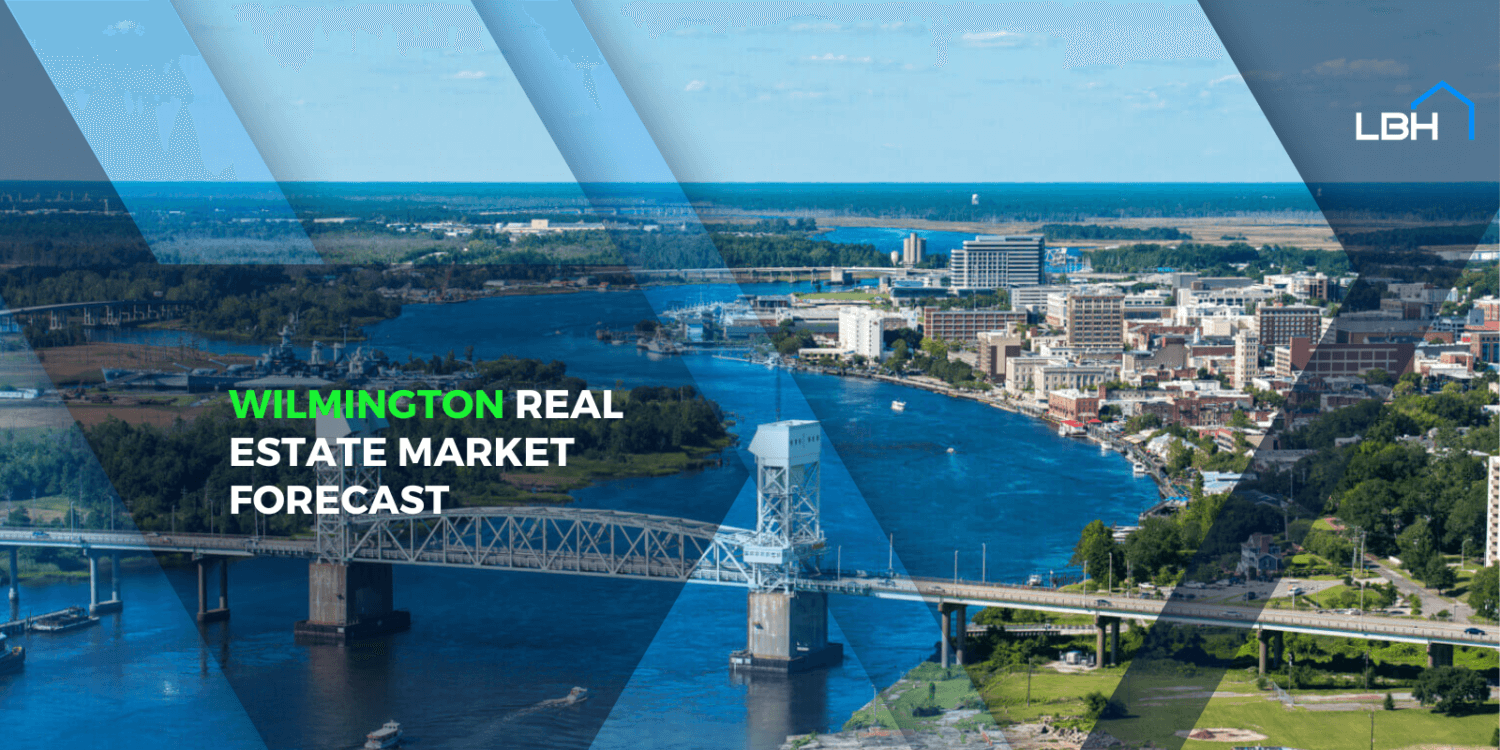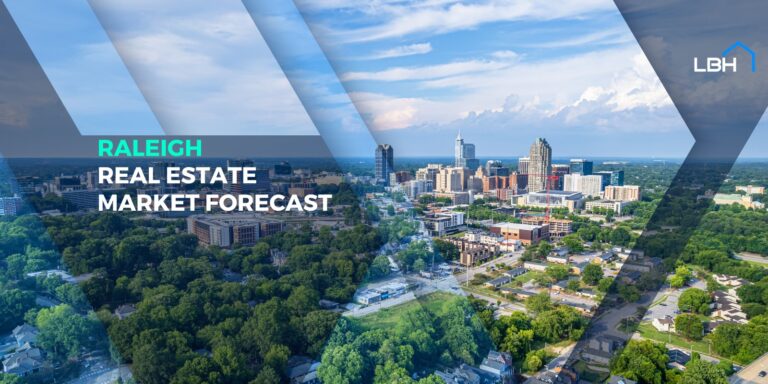A port city in a prime location, Wilmington, North Carolina, greatly benefits from being close to the beach. Wilmington, consisting of 40 neighborhoods, is the primary hub for the entire state’s maritime traffic.
For this reason, the city’s economic outlook is positive and supports a strong housing market.
According to Realtor.com, the typical house in the Wilmington real estate market costs about $477,500.
If you are looking to dispose of your home or buy one, this article is for you. Find out everything you need to know about the Wilmington housing market, including trends, types of houses you can find here, and popular neighborhoods in the Wilmington property market.
Wilmington Real Estate: Current Market Condition
Let’s look into prevailing conditions in the Wilmington real estate market – all data courtesy of Realtor.com.
Median Listing Home Price
The median listing home price in Wilmington property market as of July 2023 was $477, 500. This price is 11.1% higher than the same time last year at $430,000. The median listing home price per square foot was $250, while the median home sold price was $415,000.
Inventory
As of July 2023, there were 1,177 homes listed for sale, with prices ranging from $25,000-$10 million.
Sale-to-List Price Ratio
In July 2023, Wilmington properties sold for roughly the asking price on average.
Buyer’s or Seller’s Market?
As of July 2023, Wilmington is a seller’s market, meaning there are more home buyers than sellers. If you’re planning to sell your property, this could be the best time to cash in.
Not so for the buyers, who might need to dig deeper into their pockets for a slice of the Wilmington home market.
Median Days on the Market
On average, a property in the Wilmington housing market gets new owners within 33 days. Realtor data indicates that this period has gone up as compared to the same period last year.
Factors Contributing to Wilmington Property Sector Growth
So, what has made the Wilmington home market a magnet for property hunters? For starters, Wilmington is witnessing an expanding population and a thriving tourism sector. It also stands out for its pleasant climate and advantageous proximity to the beach.
Here is a close look into the top factors that contribute to a robust Wilmington housing market.
Booming Tourism Industry
In the post-pandemic era, the city of Wilmington has undergone a consistent rebound and appears poised to maintain its current trajectory. What significantly contributes to the region’s recovery is the tourism sector.
In the past year, tourists visiting Wilmington were responsible for generating over 80% percent of the newly created jobs. Alongside tourism, the healthcare industry has established a strong foothold in the Wilmington vicinity.
And it’s not just about tourism:
A Milken Institute report highlights the transformation occurring in Wilmington’s economy, which is evolving from primarily relying on tourism to encompassing a broader range of industries, such as professional services and education.
Vibrant Social Services
Social services are important elements of a growing city. From 2011 to 2021, the education and healthcare sectors in Wilmington experienced substantial growth, with the education and health services sector expanding by 85.2% and the professional and business services sector increasing by 73.5%.
The leading employers in Wilmington continue to be Novant New Hanover Regional Medical Centre, New Hanover County Schools, and UNCW, all of which employ over 1,000 individuals each.
According to the country’s economic mobility report, those working in educational services earned an average of $963 per week. In the healthcare sector, workers who make up 17.5% of the area’s workforce earn approximately $1,089 per week.
Locational Advantages
Wilmington’s compact yet expanding real estate market stands out thanks to its pleasant climate, proximity to expansive beaches, and convenience of a nearby airport.
The population of the Wilmington metropolitan area is experiencing rapid growth. Throughout the pandemic, cities with lower population densities, such as Wilmington, witnessed a significant influx of newcomers, making smaller real estate markets an attractive option for investors.
Ease of Doing Business
Wilmington, North Carolina, continues to exhibit a growing inclination toward fostering business growth.
In the Milken Institute report cited earlier, Wilmington is ranked 7 out of 200 comparable locations.
This ranking is up from position 21 in 2022 and position 37 in 2021, indicating a steady improvement in the business environment.
A separate ranking by NerdWallet ranks Wilmington in the second position as the most favorable location to launch a business in the entire nation. What’s even more remarkable is that the city boasts nearly 15 distinct businesses for every 100 residents.
Job Growth
The current unemployment rate in Wilmington stands at 3.3%, which is notably lower than the national average of 3.8%.
As the region expects an influx of new job opportunities, the local population has seen a roughly 2% increase from the previous year. Anticipated job expansion will follow the lead of nearby metropolitan areas, and it’s poised for a remarkable surge in the foreseeable future.
The Milken report finds that job growth in Wilmington increased by 8.8% while there was a 44% spike in wages over the last five years.
Wilmington, being a well-frequented port city, might experience favorable outcomes from the substantial aerospace initiatives projected to impact Charlotte.
Numerous aerospace firms have shown keen interest in this region, which is likely to further bolster an already robust employment sector.
Furthermore, Wilmington’s strong ties to the healthcare, technology, and entertainment industries ensure a consistent flow of professionals to the region, solidifying its reputation as a secure choice for property investments.
Infrastructure Development
The North Carolina State Ports Authority’s Port of Wilmington enjoys several advantages. Recently, it achieved recognition as the most efficient port in North America, as assessed by the World Bank and S&P Global Market Intelligence.
Furthermore, NC Ports holds the 44th position among the world’s most productive terminals.
Over the past five years, NC Ports has committed over $356 million to enhance its infrastructure and contribute to its operational efficiency.
The organization also has plans to alleviate vehicular congestion and enhance transportation efficiency through the establishment of a new intermodal facility. This facility aims to redirect nearly 250,000 container boxes from trucks to rail within the next 10 years. Construction will commence in January 2024 and end in early 2025.
Wilmington International Airport and the local tourism authorities have collaborated to market the city as an attractive spot for both business and leisure trips. This partnership has drawn in investors, tourists, and companies from various parts of the nation, setting off a positive chain reaction that drives growth.
Good Governance
Good governance has also been the bane of this port city. According to Wilmington Chamber of Commerce CEO and president Natalie English, Wilmington’s bipartisanship and collaboration on the economy between the city council and county commissioners make Wilmington a vibrant and resilient city on the rise.
To demonstrate this collaborative approach, in 2022, Wilmington City Council passed $685,000 in incentives for four companies, while commissioners passed over $1.9 million.
The impact of these incentives unlocked over 1,000 jobs, $110 million in payroll, and $125 million in capital investments.
Affordable Housing Initiatives
In fiscal year 2023, the City of Wilmington initiated a program where it set aside 1 cent out of every 39.5 cents per $100 valuation in property taxes to support affordable housing efforts.
As reported by the North Carolina Housing Coalition, the challenge of affordable housing is significant in New Hanover, with 52% of renters and 22% of homeowners facing difficulties in affording a home.
Currently, the fair market rent for a two-bedroom apartment in the Wilmington property market stands at $1,258, which implies that a household should have an annual income of $50,360 to afford living there comfortably.
In contrast, the median income in the area is approximately $56,000. However, healthcare workers typically earn an average salary of $28,480, construction employees make around $36,360, and local police officers have an average income of about $47,310.
Demographic Factors
Within the Wilmington housing market, a significant portion of residents hold college degrees, and many are married. Moreover, a substantial number of inhabitants are property owners, with a considerable portion falling within the age group of 20 to 29.
It’s worth noting, however, that the cost of living in Wilmington is higher than the rest of the state, with expenses totaling $59,200, representing a 14.5% increase over the state average.
Forecast: What Does the Future Hold for Wilmington Property Market?
According to the Wallet Investor Live Forecast System, it may not be the best time to buy a house in Wilmington city in the short term.
However, if you’re in search of real estate investment opportunities that offer strong potential for profit in the long term, the Wilmington housing market presents a lucrative investment choice.
According to industry projections, there is anticipated long-term growth. The estimated price of an average home in the Wilmington region is set to reach $269,730 by Sep. 30, 2028.
For those considering a five-year investment, the expected return is approximately +7.11%, suggesting that an investment of $100,000 today could potentially result in a profit of $107,110 by 2028.
In the past year, property values in Wilmington City have shown some volatility, rising 10 times and declining two times.
According to the above report on the Wilmington real estate market, a 12.535% increase in predicted sales prices over the next decade is plausible.
Wilmington Property Market Features
The pandemic brought about shifts in renters’ expectations regarding their homes. There is an ongoing preference for additional rooms, outdoor spaces, and communal areas as families spend more time indoors.
In Wilmington, there is a noticeable move away from homes with outdated power systems. Rising utility costs have led property owners to pivot away from non-renewable energy sources to save significant amounts of money.
Furthermore, astute property owners should also consider extreme weather and the risk of flood damage along North Carolina’s coast.
Given the more frequent and severe hurricanes, forward-thinking investors may decide to implement protection plans now to prevent costly property damage repairs in the future.
Types of Housing Available in the Wilmington Home Market
Mobile homes are highly sought-after housing options in North Carolina, particularly in Wilmington, where affordable housing is becoming increasingly scarce.
With the escalating costs of land and numerous mobile home parks put up for sale, many individuals are recognizing mobile parks as a promising investment for rental properties.
Detached single-family homes stand out as the most popular rental unit type in Wilmington, a trend that is consistent nationwide. In Wilmington alone, single-family homes constitute half of the available rental units in the market.
Apartment complexes come in a close second. Students attending the University of North Carolina in Wilmington, especially those units that are near the campus lease these two types of accommodations frequently.
Popular Neighborhoods in Wilmington Housing Market
With more than 40 neighborhoods, residents and visitors alike have plenty of places to select from when looking for a place to rent or buy. Here are some popular neighborhoods in this port city:
- Sentry Oaks: In this well-established neighborhood, you’ll find an assortment of upscale residences, condominiums, and townhouses along picturesque tree-lined streets. The community also features traditional homes known for their larger-than-average lot sizes, making it a highly sought-after destination.
- The Cape: If you love the outdoors, consider exploring The Cape. Situated to the south of RiverLights, this neighborhood offers convenient access to Kure Beach, Carolina Beach, and Fort Fisher.
Here, you’ll find a variety of upscale houses, residential plots, and townhouses available for sale near the beach. Some of the developments within The Cape include Ocean Dunes, Seaside Landing, and Surfside Estates.
- Mayfaire: Mayfaire is an ideal shopping spot, boasting more than 100 stores and dining establishments within an upscale open-air mall. It boasts numerous parks, such as Ogden Park and Wrightsville Beach Park. If you have a passion for outdoor activities, you’ll relish the proximity to the waterfront.
- Wilmington Historic District: If you desire a central location, consider the charming historic downtown district! This area is teeming with 18th and 19th-century architectural gems, shaded avenues, and traditional gas lamps.
Sporting an impressive Walk Score of 90, you can effortlessly amble to an array of restaurants, boutiques, art galleries, and scenic parks.
Final Thoughts
Tourism plays a pivotal role in Wilmington’s economy, accounting for more than 80% of net job creation in the city. Additionally, the healthcare industry has established a strong presence in the area.
Despite these positive aspects, the Wilmington property market faces challenges. The city’s low cost of doing business, while attractive to new industries, has resulted in income growth that lags behind the national average.
The seasonal dependency arising from the tourism industry makes Wilmington vulnerable to economic shifts, particularly during the winter months.
Overall, the Wilmington real estate market has made substantial progress post-pandemic, with sustainable home price growth and a job sector capable of accommodating a growing population. The outlook for Wilmington’s continued prosperity appears promising.













